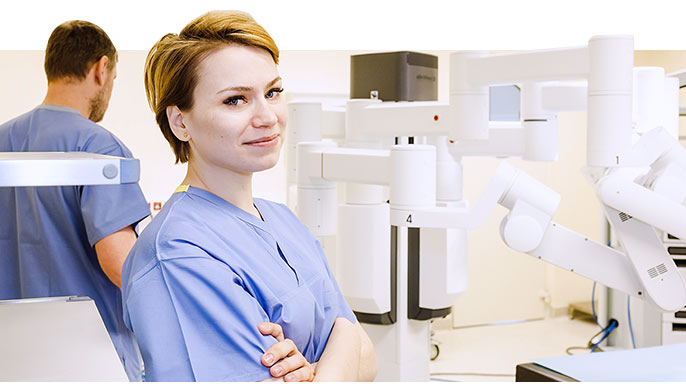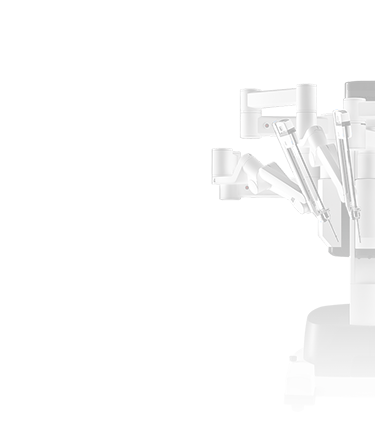

Endometrial cancer, also called uterine cancer, is a disease which, according to statistics, most frequently affects women between 50 and 70 years of age. It arises from the endometrium, i.e. the lining of the uterus and therefore it is adenocarcinomas that are most often diagnosed in connection with endometrial cancer (they arise from the cells that produce mucus or other fluids). It is the most commonly diagnosed cancer of female reproductive organs after cervical cancer. According to global statistics, it accounts for 4.8% of cancers diagnosed in women, which makes it the sixth most common cancer occurring in the female population in the world.
Currently, 2 in 100 women in Europe suffer from endometrial cancer. And 25% of them are still at a young age and menstruate. Nevertheless, the cancer is most frequently diagnosed in women at a perimenopausal age, i.e. between 55 and 64 years of age, as well as in women aged over 70 years.
Two types of endometrial cancer have been distinguished with respect to the age of onset of the cancer and its aggressiveness:
- cancer type 1 – most common at menopause age. Occurs due to endometrial growth stimulated by oestrogens.
- cancer type 2 – is a less common type of endometrial cancer occurring in women aged over 60 and 70 years. Its development is by no means related to hormonal stimulation; it is a serous carcinoma which is unfortunately associated with a worse prognosis.
The aetiology is not fully understood; however, specialists have specified certain risk factors which significantly increase the probability of endometrial cancer in women.
Factors increasing the risk of developing
endometrial cancer:
- age– the risk in women increases with age
- genes– this refers to Lynch syndrome which is the most common hereditary colon cancer syndrome. Lynch syndrome accounts for 5% of endometrial cancer cases in women. Additionally, women with a family history of endometrial, ovarian or breast cancer appear to be at increased risk of having this malignancy.
- gynaecological problems – conditions such as polycystic ovary syndrome, endometrial hyperplasia or the use of oestrogen
- diabetes, hypertension and overweight
- nulliparity
- geographical factors – women living in the territories of North America and Europe have a higher risk of developing endometrial cancer.
Endometrial cancer usually gives clear symptoms already in the early stage, which enables an early diagnosis and effective treatment. The symptoms that should cause concern include intermenstrual bleeding or vaginal bleeding after the menopause as well as abundant bloody or bloody and purulent vaginal discharge. There may also occur some pain complaints, such as lower abdominal pain or sacral pain, and a sense of fullness in the pelvis.
Diagnosing endometrial cancer
Diagnosis of endometrial cancer takes into account results of three basic examinations, i.e.:
- physical examination – gynaecological examination to localise the tumour and determine its size
- imaging examination – ultrasound and, additionally, chest X-ray in order to exclude possible metastasis
- histopathological examination – assessment of the biological material and checking cancer cells.


Treatment of endometrial cancer
The method of treatment of endometrial cancer depends primarily on the patient’s age and results of the histopathological examination as well as on the degree of advancement of the cancer at the time of diagnosis. Specialists give consideration to both hormonal and surgical treatment. Patients in the advanced stage of endometrial cancer may have to undergo a hysterectomy, i.e. a surgical procedure to remove the womb (uterus), which is performed at our hospital with the assistance of the robot.
The following methods of treatment of endometrial cancer are used:
Hysterectomy
It is a surgical procedure in which the uterus is resected together with bilateral removal of uterine appendages. In selected clinical situations it may be necessary to remove the pelvic and periaortic lymph nodes. In more advanced cases, the purpose of the procedure is the removal the whole cancerous tissue from the abdominal cavity, i.e. so-called maximum cytoreduction. This procedure can be performed using the open technique, transvaginally or laparoscopically.
Hysterectomy using the robot
This is a method used to remove benign lesions and cancers of the reproductive organ. It is the most modern surgical technique for removing the uterus, ovaries and lymph nodes while at the same time protecting the autonomic nerves in the early stages of cancer. All over the world this is the most common robotic assisted surgical procedure. The robot makes it possible to perform hysterectomy with minimal access, as well as with greater efficiency, dexterity and control than in the classic access.
Radiotherapy
In this method the cancer and the surrounding tissues are exposed to beams of radiation which kills cancer cells. Radiation is usually given in two steps, i.e. ‘external radiotherapy’ – where a machine directs beams of radiation at the cancer; and ‘internal radiotherapy’ – where a radioactive implant is placed inside in the uterine cavity near the cancer so as not to damage the normal tissues around the tumour.
Chemotherapy
In this method strong medication killing cancer cells is administered intravenously. The therapy involves a number of side effects, which include feeling sick, weakening of the bone marrow (immunity) or hair loss which almost always ceases after the treatment has finished.
Hormone therapy
Oral or intramuscular administration of hormones from the group of progestogens which effectively inhibit the growth of endometrial cancer. The method is usually well tolerated by patients; nevertheless, it involves the risk of venous thrombosis and often leads to weight gain.

 +48 785 054 460
+48 785 054 460 










